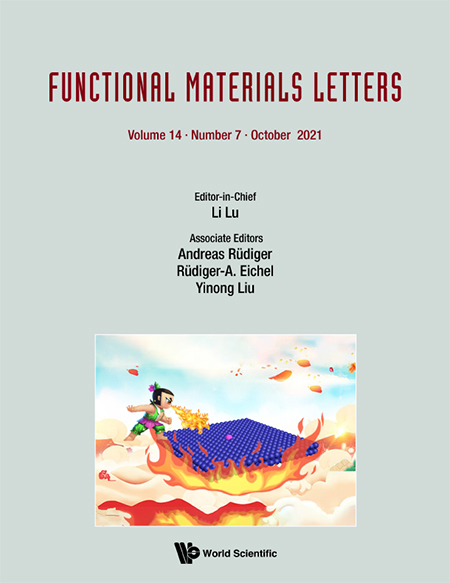The effects of solvent viscosity on the morphology and photocatalytic activity of BiOBr catalysts
Abstract
BiOBr photocatalysts were prepared by changing the solvent and synthesis method. SEM, XRD and BET characterization shows that the sample prepared in high-viscosity solution by precipitation method has tremella-like microstructure, with smaller size and higher surface area. Among them, the BiOBr prepared in glycerol solution (GR-P) has the highest surface area of 113.8 m2⋅. XRD also indicates that the GR-P has much more exposed (110) facets than other samples. The Rhodamine B degradation tests show that the GR-P has the best activity on both deethylation and aromatic ring destruction steps, indicating that the exposed (110) facets promote the degradation process.
References
- 1. , Mol. Catal. 453, 149 (2018). Crossref, Web of Science, Google Scholar
- 2. , Appl. Surf. Sci. 436, 854 (2018). Crossref, Web of Science, Google Scholar
- 3. , J. Colloid Interf. Sci. 524, 350 (2018). Crossref, Web of Science, Google Scholar
- 4. , Appl. Surf. Sci. 448, 41 (2018). Crossref, Web of Science, Google Scholar
- 5. , Appl. Catal. B: Environ. 237, 442 (2018). Crossref, Web of Science, Google Scholar
- 6. , J. Colloid Interf. Sci. 524, 227 (2018). Crossref, Web of Science, Google Scholar
- 7. , Appl. Catal. B. Environ. 202, 528 (2017). Crossref, Web of Science, Google Scholar
- 8. , Adv. Colloid Interf. 254, 76 (2018). Crossref, Web of Science, Google Scholar
- 9. , Mater. Lett. 203, 77 (2017). Crossref, Web of Science, Google Scholar
- 10. , Appl. Surf. Sci. 288, 369 (2014). Crossref, Web of Science, Google Scholar
- 11. , Mater. Lett. 222, 164 (2018). Crossref, Web of Science, Google Scholar
- 12. , J. Phys. Chem. C 118, 14662 (2014). Crossref, Web of Science, Google Scholar
- 13. , Catal. Today 335, 429 (2019). Crossref, Web of Science, Google Scholar
- 14. , RSC Adv. 6, 2028 (2013). Crossref, Web of Science, Google Scholar
- 15. , Catal. Today 335, 193 (2019). Crossref, Web of Science, Google Scholar
- 16. , Mater. Res. Bull. 116, 89 (2019). Crossref, Web of Science, Google Scholar
- 17. , Appl. Surf. Sci. 433, 76 (2018). Crossref, Web of Science, Google Scholar
- 18. , Green Energy Environ. 2, 124 (2017). Crossref, Google Scholar
- 19. , Mater. Res. Bull. 47, 3753 (2012). Crossref, Web of Science, Google Scholar
- 20. , J. Hazard. Mater. 264, 293 (2014). Crossref, Web of Science, Google Scholar
| Remember to check out the Most Cited Articles! |
|---|
|
Check out New Titles in Materials Science and Nanotechnology |


